Art World
The Artnet NFT 30 Report: Meet the Artists, Innovators, and Collectors Who Built Our New Crypto-Art Era (Part One)
Discover the people who have created the new NFT paradigm brick by digital brick in part one of our three-part report.

Discover the people who have created the new NFT paradigm brick by digital brick in part one of our three-part report.

Artnet NFT

Who are the figures powering today’s NFT boom? The Artnet NFT 30, sponsored by the APENFT Foundation, offers an introduction to key players.
[CLICK HERE TO DOWNLOAD THE ENTIRE ARTNET NFT 30 LIST AS A PDF]
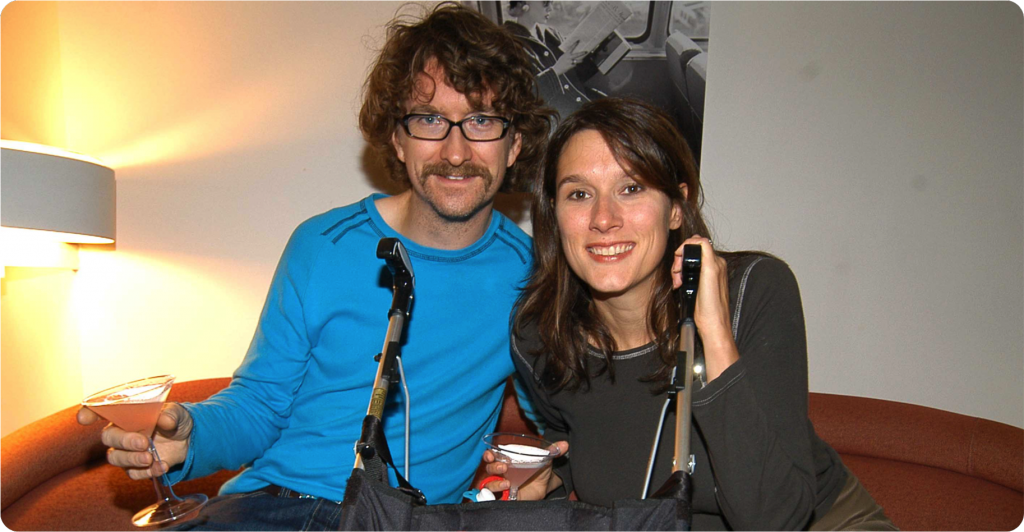
Photo: Richard Orjis/Patrick McMullan.
By 2014, Kevin and Jennifer McCoy were already pretty famous for their collaborative digital art, with their work being reblogged at a viral pace on open platforms like Tumblr. It wasn’t very satisfying, however, because the sharing of their projects was out of their control, lacking any context, and certainly not providing them any compensation (or, sometimes, even attribution). Kevin, an associate professor in New York University’s art department, wanted to figure out a way to establish a record for each of these digital transactions.
On May 3, 2014, he did. After being paired with the technologist Anil Dash for Rhizome’s annual Seven on Seven hackathon, Kevin went on stage and used the blockchain of a cryptocurrency called Namecoin to register one of Jennifer’s video artworks, providing it with a unique digital identity and beginning a chain of provenance. Dash bought it from him then and there with the five bucks he had in his (physical) wallet.
While the words “non-fungible token” were never used—they called their invention Monegraph, short for “monetized graphics”—this pretty famous for their collaborative digital (surprisingly funny) 22-minute presentation marked the birth of NFTs. It was done with a clear-eyed view of the implications: the intention, they said, was to simultaneously solve the key problems of digital art (“most digital art is treated as worthless”) and the blockchain (“currency is the least interesting thing you could build with this technology”) in order to create a new market.
That market did not emerge overnight. McCoy continued to make NFTs, but was discouraged by a lack of interest among buyers. (In those early days, he made just a couple hundred bucks.) Fast forward to today, and it’s a different story. This June, McCoy sold the first-ever NFT—a flickering geometric pattern called Quantum that he minted the night before the Rhizome conference as a proof of concept—for $1.5 million at Sotheby’s. Now, Kevin and Jennifer McCoy are in high demand among a wide range of creators. Next up, they are collaborating with the rapper and producer Timbaland to mint tracks from his upcoming EP “Opera Noir” as NFTs.

Photo: Andrew J. Whitaker/The Post and Courier via AP.
If the NFT-verse has a king, Beeple undeniably occupies the throne. Though Mike Winkelmann—better known by his aforementioned artistic alias—has been making digital art for over a decade, it wasn’t until an NFT of his work sold for $69.3 million at Christie’s New York in March 2021 that he became the public face of the entire crypto-art phenomenon. The record-setting price rendered the work the third most expensive by a living artist ever sold at auction, spawning a media frenzy, initiating an NFT craze, and spinning the traditional art world into an existential crisis.
Beneath the surface, the story is more complex. The piece that grabbed the world’s attention, Everydays: The First 5000 Days, is not one artwork but rather a compendium. It is the totality of Winkelmann’s ongoing “Everydays” project, which he launched in 2007 with a commitment to create an artwork on a daily basis—including on his wedding day and those of his children’s births. The artist’s yearslong development shows: what began with crude sketches progressed into the use of Adobe Illustrator and Cinema 4D, precipitating his brazen 2020 political compositions (and some other caricatures that have been called out for their racial insensitivity).
Today, Winklemann is most noted for his digital images featuring pop-culture icons (Pixar is a frequent source of borrowing) in irreverent, dystopian compositions that satirize current events—and sell like hotcakes, often for sums in the millions. He’s also become something of a pop-culture icon himself, even appearing on The Tonight Show Starring Jimmy Fallon, a kind of mass-media spotlight rarely given to any artist, crypto-based or otherwise.
But where he goes from here remains to be seen. On November 9, Christie’s sold a new Beeple artwork called HUMAN ONE for $29 million at its 21st-century art evening auction in New York. It was unlike anything the artist’s fans had seen before: a seven-foot-tall sculptural video box playing 24 hours’ worth of footage of an animated figure walking through a barren, Mars-like landscape—footage that Beeple promises to update over the course of his life in ways that change the story being told. Now, rumor has it, Beeple may be getting into animatronics as well. It’s his world now—we’re just living in it.
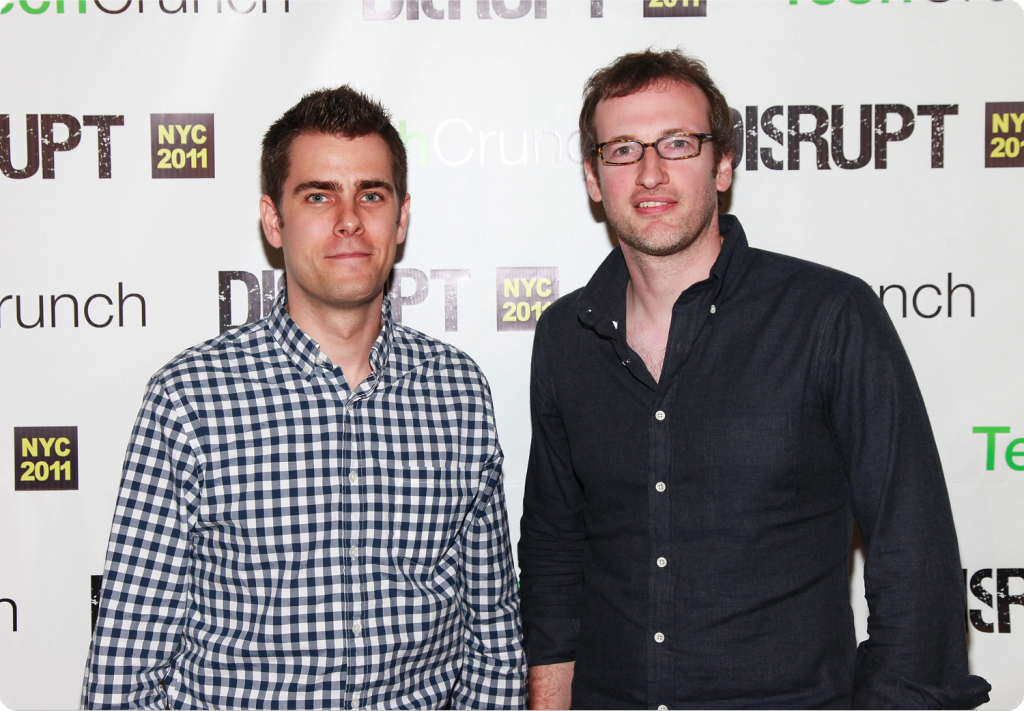
Photo: Charles Eshelman/Getty Images.
Picasso and Braque. Watson and Crick. Lennon and McCartney. Now, add Matt Hall and John Watkinson to the list of duos who have reshaped their fields. It was these two self-described Canadian “creative technologists” who founded a little company called Larva Labs in 2005 and then went on to mint the CryptoPunks 12 years later. In the process, they created the most widely circulated, fervently sought-after NFTs in existence and gave rise to a whole community of impassioned collectors.
With 10,000 algorithmically generated Punks existing in total, the 24-pixel-square images—mostly depicting humans in various modish guises but also featuring far rarer apes, aliens, and zombies (also in various modish guises)—have been rising in value astronomically since their release in 2017. Upwards of $141 million in CryptoPunk transactions have been reported in a single day; by September, total sales had already surpassed $1 billion.
But what may be more significant than the CryptoPunks’ high prices is their cultural currency as instantly recognizable symbols of crypto cachet. While Jay-Z and Snoop Dogg both long sported Punks as their Twitter avatars, and Reddit cofounder Alexis Ohanian wore a pin version of the Punk he gave his wife, Serena Williams, to the 2021 Met Gala, the real heroes of the Punk community are the OGs who snapped them up at the very beginning. In 2017, Hall and Watkinson offered them for free to the earliest of adopters, giving 9,000 away and keeping just 1,000 for themselves.
Today, the duo behind Larva Labs has released new NFT series—the Meebits and Autoglyphs, both on the rise—and worked on an array of apps and software programs for the likes of Google and Microsoft. But CryptoPunks remain their crown jewel, and their creations may be about to become a household name. This fall, Larva Labs signed a contract with United Talent Agency, opening the door to future entertainment deals across film, TV, and video games.
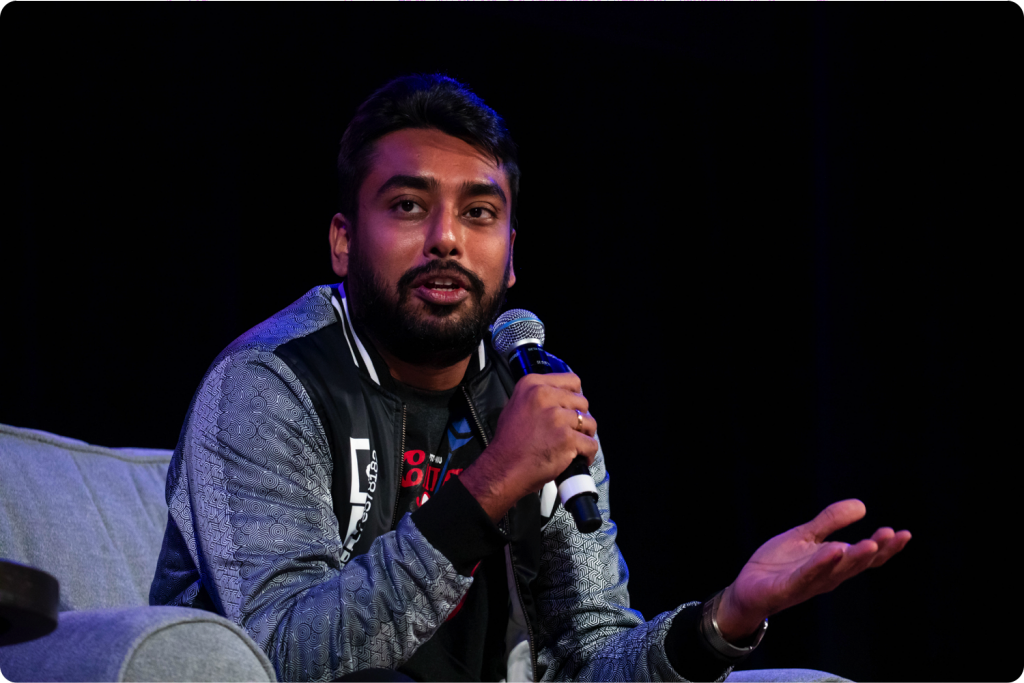
Photo: Michael Nagle/Bloomberg via Getty Images.
The Singapore-based blockchain entrepreneur Vignesh Sundaresan, better known as MetaKovan (or “King of Meta,” in English), made headlines in March when he and his business partner Anand Venkateswaran (aka Twobadour) revealed themselves as the buyers of Beeple’s game-changing $69.3 million NFT at Christie’s. Their rationale for the purchase? “The point was to show Indians and people of color that they too could be patrons, that crypto was an equalizing power between the West and the Rest, and that the global south was rising,” they said in a statement.
There was a business angle, too. After cofounding the bitcoin ATM startup Bitaccess in 2013, Sundaresan—a rumored crypto-billionaire—launched Metapurse with Venkateswaran as a venture fund to buy up NFTs. They scooped up a broad portfolio of assets (including 20 other Beeple works) in the years before their big splash at Christie’s. The twist? Metapurse issued 10 million so-called B20 tokens to allow people to buy stakes in their NFT fund as a whole, making the record-shattering Beeple a brilliant marketing coup for their efforts.
Now, MetaKovan is planning a virtual museum to host Everydays: The First 5000 Days, and earlier this year he announced that Metapurse would offer a $100,000 fellowship apiece to five “crypto storytellers.” The firm’s mission, he wrote, is “to democratize access to NFTs.”

Photo: Courtesy of Art Blocks
As the founder and CEO of the mighty Art Blocks, the first-of-its-kind platform for creating generative NFTs stored on the Ethereum blockchain, Erick Calderon (aka “Snowfro,” his nickname stemming from the snow-cone stand he once owned) is a revered figure in the crypto-art world.
Calderon’s life changed one day in 2017 when he heard that Larva Labs was allowing people to claim, for free, a series of generative NFTs they had created. The NFTs were the CryptoPunks, and he swiftly amassed a serious collection, becoming one of the most important Punk OGs—and finding himself immersed in a whole new strain of art-making that was a true collaboration between human and algorithm. Captivated by the possibilities, Calderon threw himself into mastering the code behind this new approach. After significant trial and error, he launched Art Blocks in November 2020 as a way to make these collaborations easy and remunerative at the same time. His platform allows artists to upload algorithms that collectors pay to mint editions from, yielding unforeseeable results.
This summer, as the NFT frenzy swept the globe, Art Blocks became a hotbed of creativity. Today, a new project drops once a week at minimum, with each carrying as many as 5,000 editions. Meanwhile, Chromie Squiggle—the first-ever project on the platform, created by Snowfro himself—has emerged as one of the most sought-after NFTs on the market. A tremendously enjoyable Slinky-like creation that comes in a whole spectrum of permutations, it has clocked over 4,100 ETH worth of trades to date on OpenSea, a total value equivalent to more than $17 million at press time.
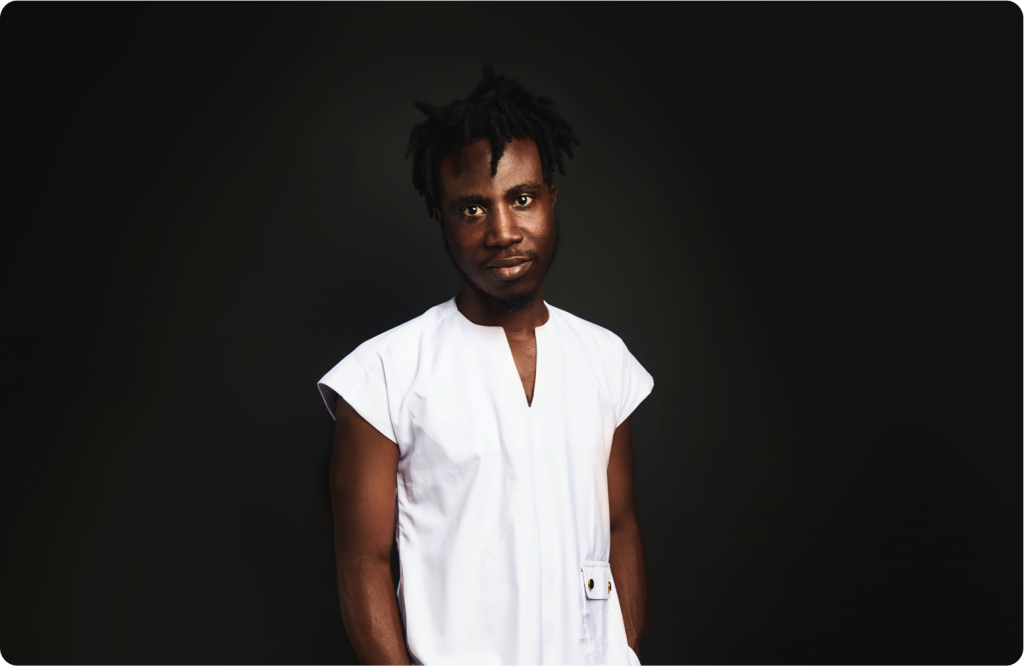
Photo: Courtesy of the artist.
Born and raised in Aba, Nigeria, the artist known as Osinachi (full name: Prince Jacon Osinachi Igwe) did not let a lack of access to sophisticated computer graphics stymie his ambition to make digital art. Instead, he taught himself how to master Microsoft Word’s rudimentary drawing feature, using it to make remarkably crisp, richly stylized portraits that touch on themes of queerness, race, and sustainability.
Today, as the chief creative officer of the DAO platform Socialstack, he has found success offering his artworks as NFTs backed by his own social-token cryptocurrency $OSINA, selling three for a combined $75,000 in the span of 10 days earlier this year. In collaboration with the 1-54 Contemporary African Art Fair, the artist also sold a suite of five David Hockney-inspired NFTs at Christie’s in October for over $210,000—marking the auction house’s first NFT sale by an African artist, as well as its entrée into social tokens, the burgeoning strain of cryptocurrencies built upon a single personality or brand.
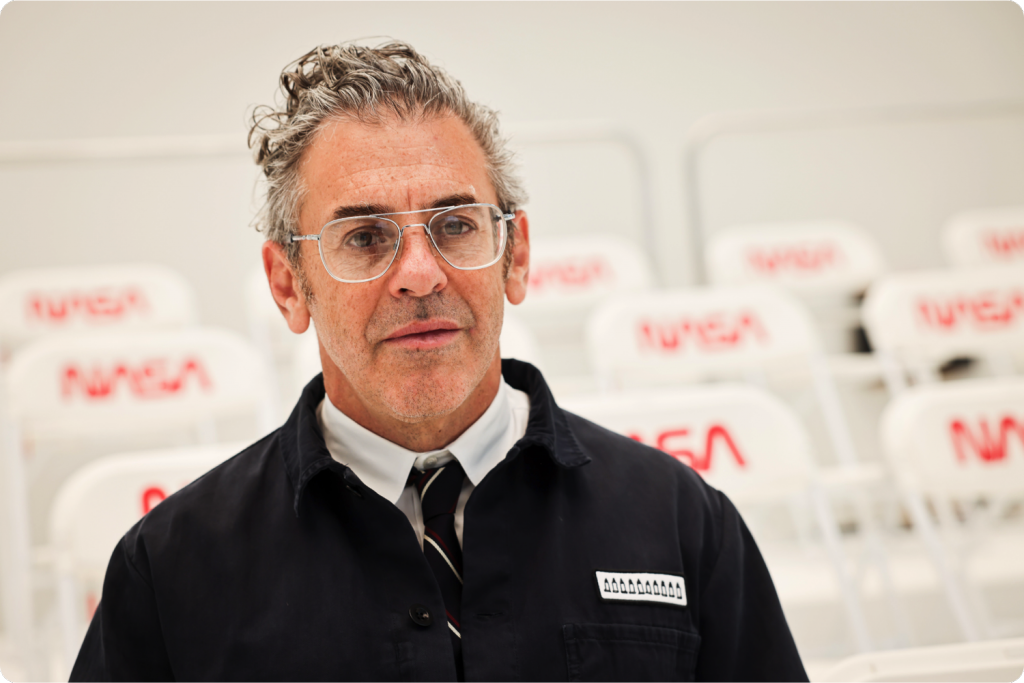
Photo: Christian Charisius/picture alliance/Getty Images.
Famous in the traditional art world for his rough-hewn DIY versions of NASA lunar landers and other objects of obsession that he makes out of wood—and even more famous for his coveted Nike “Mars Yard” sneaker collaborations—the artist Tom Sachs recently launched his own online platform to let users mint NFTs of wonky, customizable rocket-ship illustrations. Patrons can mix and match a nose, body, and tail featuring various branded logos, with the option of receiving a physical version of the image in the mail. (Buyers can also get a video of the rocket being launched, a performance Sachs has orchestrated in cities around the world, most recently during Art Basel Miami Beach 2021.)
In the crypto community, Sachs’s venture has been received far more favorably than the efforts of other IRL artists whose crypto dab- blings have been criticized as garish cash-grabs (cough, Damien Hirst, cough). Brands have taken notice, as well: in August, Budweiser purchased a $25,000 rocket-ship NFT composed of three stacked Bud cans, which now serves as its Twitter profile picture.
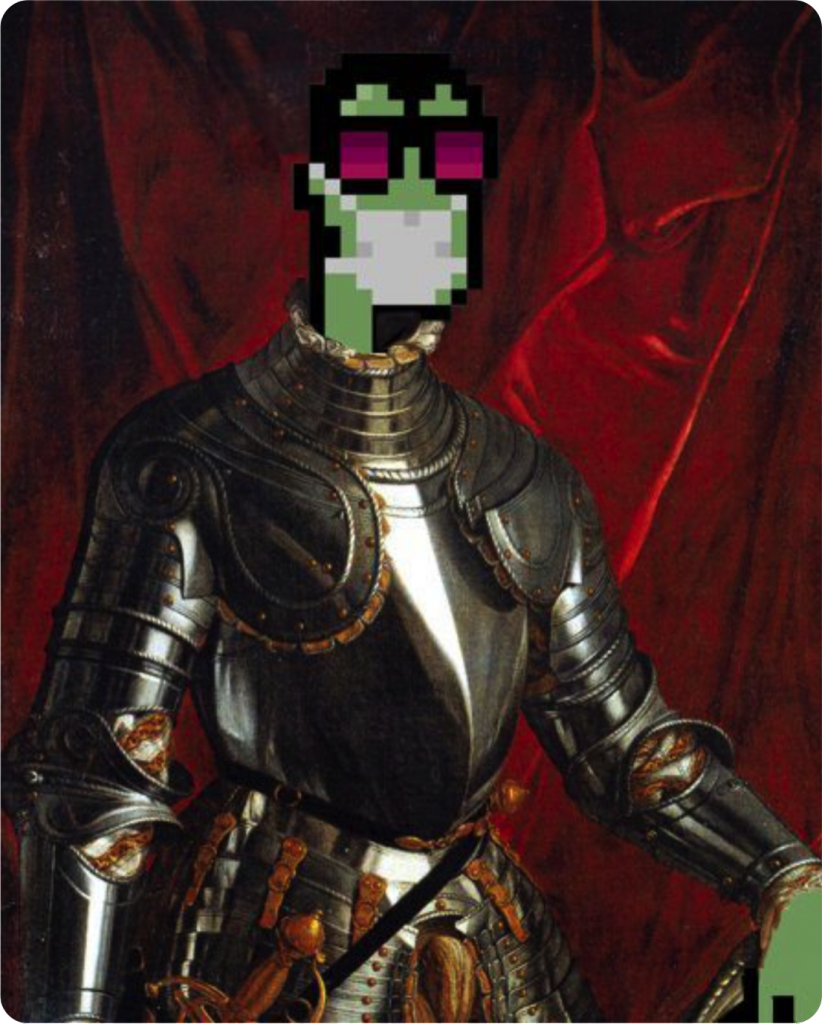
Photo: Courtesy of Cozomo de’ Medici.
Who is Cozomo de’ Medici? The entire NFT world wants to know. Ever since the mysterious collector behind this Twitter handle emerged on the scene in August, they’ve captivated the cryptorati with a combination of gnomic utterances and sage NFT investment advice, all packaged under a playful identity claiming a parallel between the famous patronage of Renaissance Florence’s Medici family (albeit with a tweaked spelling seemingly borrowed from Seinfeld’s Kramer) and Cozomo’s own pursuits in the digital art world today. A sample of his wisdom? “Crypto billionaires will flip traditional billionaires. NFTs will flip traditional art.”
And it’s not all talk. With astonishing speed, Cozomo acquired a collection of Art Blocks and CryptoPunks alongside NFTs by Justin Aversano, Tom Sachs, and a host of other artists. He now owns hundreds of artworks, including coveted examples that the crypto community calls “holy grails,” that are together valued in the tens of millions of dollars—including what he calls a “grail of grails,” XCOPY’s Right-click and Save As guy, which he bought this December for 1,600 ETH ($7 million at press time) on SuperRare, a record for that platform. True to their historical namesake, the collector has also put money into charitable causes powered by NFTs, for instance buying (and promoting) squirrel-themed works whose proceeds benefit a nonprofit providing support to women in Afghanistan.
But… is Cozomo really Snoop Dogg? That was the rumor that swept the internet after the collector announced that a celebrity would reveal Cozomo’s true identity (with the first to spot the announcement winning 1 ETH), only for Snoop Dogg’s official account to tweet shortly thereafter, “I am @CozomoMedici.” The frenzy of investigations that followed, however, cast doubt on the link, pointing to a selfie that Cozomo posted from Lake Como with the musician Jason Derulo that obscured their face but not their short, Caucasian body. Today, suspicion has alighted on the rapper Russ, a collaborator of Snoop’s who fits the photo (and claims Medici-appropriate Italian descent). Or maybe it’s Banksy?
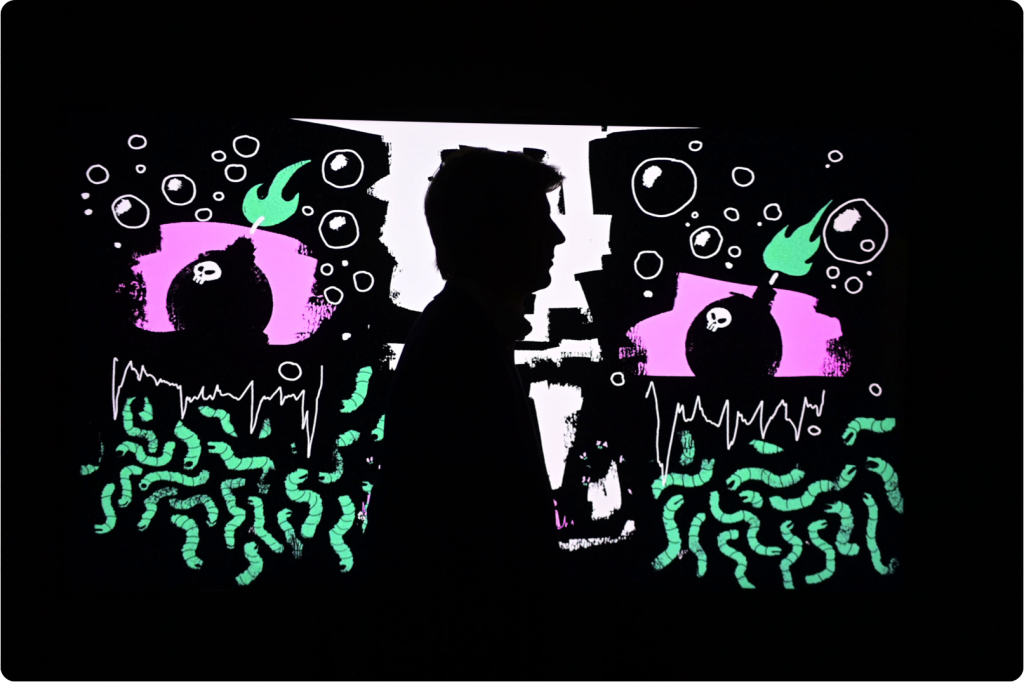
Photo: Neil Hall/EPA EFE/Shutterstock.
Many artists in the fine-art world are dipping their toes into NFTs, but the London-based digital artist XCOPY is widely regarded as one of the most significant NFT OGs out there. Known for making artworks distinguished by an unmistakable aesthetic involving CMYK palettes, cartoonish figuration, and twitchy flashing graphics evocative of old-fashioned television static, the anonymous artist signed onto SuperRare immediately upon its launch in 2017 and has since built up a considerable market.
Today, the total value of XCOPY’s nearly 2,000 works sold is a reported $59.1 million and climbing. In November, the NFT for A Coin for the Ferryman, originally minted in 2018 at a $139 value, sold on SuperRare for 1,330 ETH, or a cool $6 million at the time. In late September, Cozomo de’ Medici scooped up the 2018 piece Some Asshole for $4 million. But some of the smartest players in the tokenized arena see something even more valuable behind XCOPY’s high prices: an artist whose work will stand the test of time.

Photo: Courtesy of Pranksy.
A fabled OG of the crypto space, the anonymous London-based collector Pranksy began investing in NFTs in 2017 armed only with a modest $600 in funds and a savant-like ability to sit at the computer all day, buying low in the morning and flipping for a marginal profit in the evening. It helps that they had an eye for value, amassing a veritable menagerie of non-fungible assets, including thousands of CryptoKitties together with more highbrow fare like Doodles and World
of Women NFTs. Over time, Pranksy’s flips have had higher and higher payoffs. Despite never having watched basketball a day in their life, for instance, they accrued a small fortune from their early and aggressive accumulation of NBA Top Shots, saying in February that they had flipped $1 million worth of highlight reels to the tune of $4.7 million in returns.
Today, Pranksy is renowned as a whale in the NFT community, with a collection valued at upwards of $900 million and an eye so respected that earlier this year they launched NFT Boxes, a curated monthly subscription service that offers a grab bag of digital art. But that doesn’t mean that they never make a misstep. They grabbed headlines in September with a major fumble, dropping $336,000 in Ethereum on a fraudulent Banksy NFT. After the fraudster actually returned the money (minus OpenSea’s $5,000 transaction fee), Pranksy tweeted a valuable lesson: “If something seems too good to be true, it normally is.”